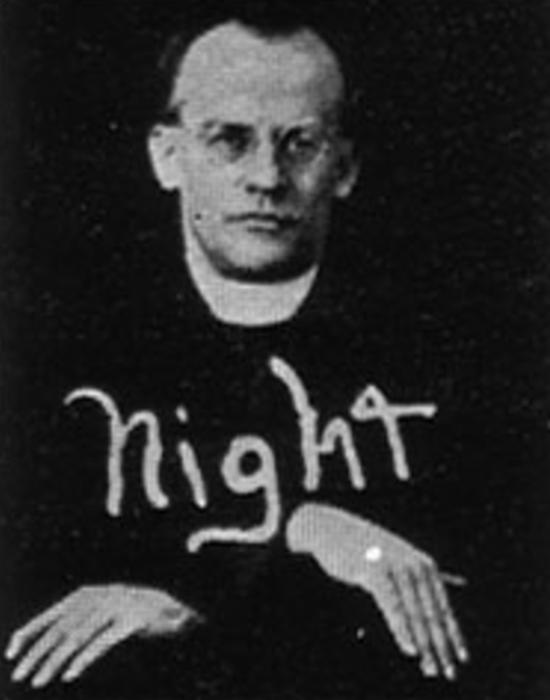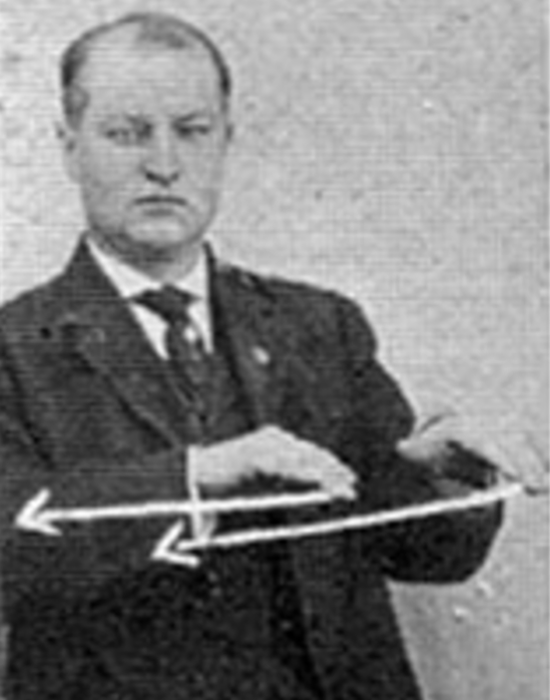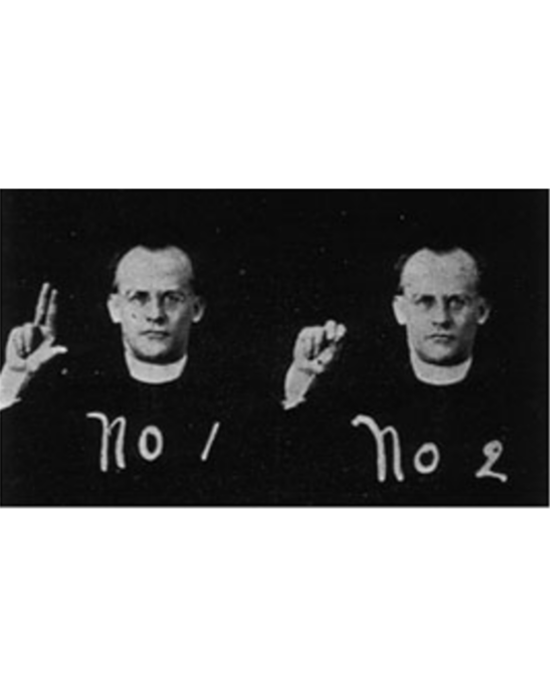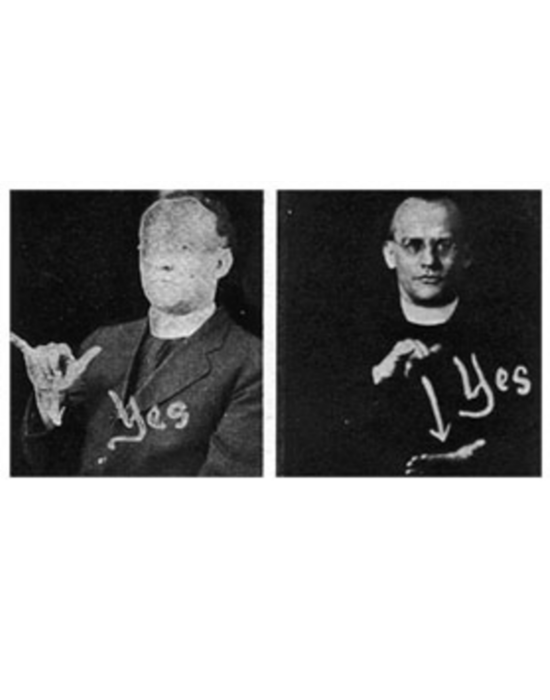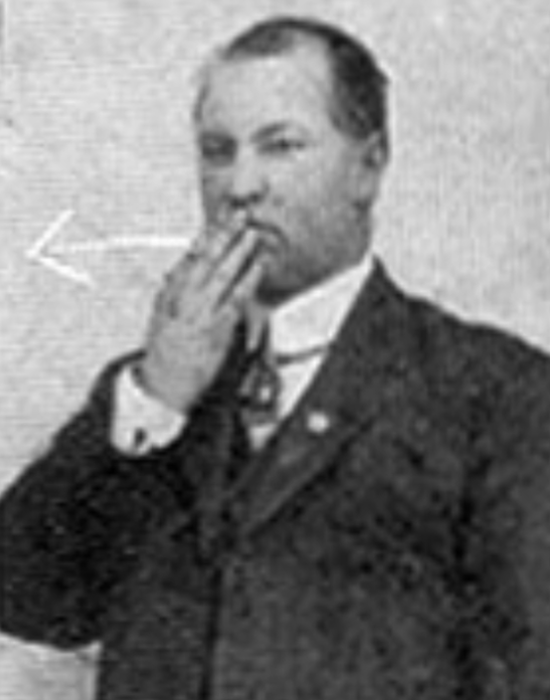
GOOD: Place the end of the palm against the mouth; then bring it down against the open left hand so that the back of the right hand rests in the palm of the left. In common use the latter part of the sign is omitted and the hand is simply thrown forward from the mouth.






